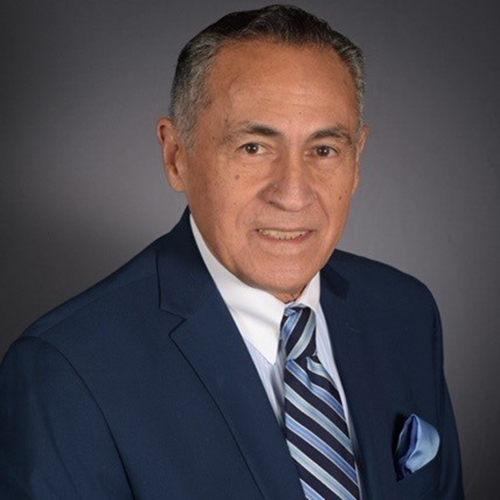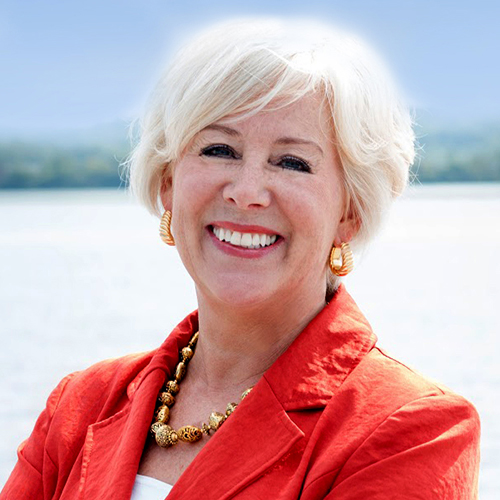School Safety and Crisis Planning Toolkit
May 18, 2023

The School Safety and Crisis Planning toolkit, comprised of continually-updated online resources to assist school district leaders, addresses the critical issues of mental health, cybersecurity and physical safety. AASA also offers a 24-hour crisis hotline service to all AASA members.
Immediate and Aftermath of a School/Community Crisis
The intent and design of this toolkit is to provide a checklist of necessary procedures before, during and after a crisis that is easily accessible by school leaders and designed specifically for school superintendents. School superintendents are encouraged to share their findings with key stakeholders in their districts. In addition, school superintendents are further encouraged to share their opinions on this toolkit with the AASA Executive Leadership Team as this toolkit will always be presented as a work in progress.
What I need to know and do as the district’s superintendent pertaining to security and safety best practice:
- Have I cultivated a strong relationship built on mutual respect with the local safety officials (police chief) and do we meet regularly to discuss safety?
- Do I have in place a detailed safety and security plan that is easily understood by all stakeholders?
- Do I have in place an identified staff member or a technology platform which will broadcast all needed information to the school community and the community-at-large pertaining to a crisis?
- Do I attend district safety committee meetings to show my unyielding support for the work?
- Am I comfortable with the safety and security plan if my district was in a crisis?
- Can I assure the local school board that every staff member (including new staff) understands our safety plan before they are with children?
- If I was out-of-district during a school emergency have I mentored or met with the key staff member who would represent my work in the midst of a tragedy?
- As needed, do I meet with my school board (minimum three times per year) in executive session to address school safety and security?
- Have I examined existing resources to reallocate assignments to meet the needs of today’s safety and security most complex issues?
- Do I meet with district mental health providers to collaborate and to have strategies in place for our most complex students who bring with them safety concerns to the district?
What I need to do in the midst of chaos:
- Proximity - Where is the best place for me to be to lead?
- Messaging – Can I use my already prepared messages from our district’s messaging bank to be proactive with communication?
- Empowerment – Have I scanned the crisis for gaps in our plan, and if need be, fill those gaps with staff members embedded within my trust circle?
- Composure – Do I have the ability to remain composed or do I delegate the point person to a designee?
- Duration – Am I able to stay at point for the duration of the crisis, and if not, how do I need to prepare and transition information to my designee?
- Reunification – Do all stakeholders have the same understanding for the parent reconnect? If I am not at the site have I designated a point person?
- Student and Staff Most Impacted by the Tragedy – Are my messages a balance of compassion and filled only with accurate information?
- School Board – Have I or my designee sent a message to the school board chair that there is a highly complex situation evolving in the district and information will be forthcoming as soon as the issue settles?
- Incident Command Center – Do I have all that I need from the ICC, and if not, how do I ascertain the information as quickly as possible?
- Personal – Have I kept my immediate family informed of the crisis and have I been able to honestly assure them of my own personal safety?
What I need to do in the aftermath of a tragedy:
- Self-Regulating - If you are taking care of everyone, who is taking care of you?
- Press Conference and Communication – Who should attend, and should there be a joint message from police and school?
- Families of Loss (if applicable) - Have I designated a point person to serve as a direct connect to the most impacted families and my office?
- Return to School – Have I consulted union presidents before finalizing my return-to-school broadcast?
- Debrief – Have I sat with all who were in the front line of the tragedy to better understand the “why” and to fully understand lessons learned?
- Support - Am I able to be present on site (out of my office) to appropriately support staff?
- Tragedy Roll-out - Do I take full ownership of the issue and if so, how?
- Human Resources – Have I met with the Human Resource department to fully understand the appropriate message to all impacted staff pertaining to need and return-to-work?
- Daily District Ritual – As the superintendent, I am spending nearly every minute of the work day navigating the tragedy; therefore, have I appropriately assigned and empowered a school leader to run the teaching and learning aspects of the school day?
- Sustainability and Recovery – Have I begun to think about who needs to be around the table when we address the inherent recovery and rebuild of the district?
Resources and Guidance for Administrators and Crisis Teams
Violence Prevention & Preparedness
- School Administrator: Revisiting School Safety and Mental Health (2023 | Source: AASA)
- Improving School Safety Through Bystander Reporting: A Toolkit for Strengthening K-12 Reporting Programs (2023 | Source: U.S. Secret Service and Cybersecurity and Infrastructure Security Agency)
- Averting Targeted School Violence: A U.S. Secret Service Analysis of Plots Against Schools (2021 | Source: U.S. Secret Service)
- Responding to Civil Unrest in Schools: Prevention to Response (2021 | Source: National Association of School Psychologists)
- Best Practice Considerations for Schools in Armed Assailant Drills (2021 | Source: National Association of School Psychologists)
- Behavior Threat Assessment and Management in the Virtual Environment (2020 | Source: National Association of School Psychologists)
- Protecting Students from Exploitation (2020 | Source: National School Boards Association)
- School Safety Drills and Exercises for Students With Autism Spectrum Disorder (ASD): Tips and Resources for Educators (2020 | Source: National Association of School Psychologists)
- School Administrator: Securing Your Schools (2019 | Source: AASA)
- Protecting America's Schools: A U.S. Secret Service Analysis of Targeted School Violence (2019 | Source: U.S. Secret Service)
- Behavioral Threat Assessment and Management (BTAM): Best Practice Considerations for K–12 Schools (2015 | Source: National Association of School Psychologists)
- School Violence Prevention: Tips for Parents and Educators (2015 | Source: National Association of School Psychologists)
- School Violence Prevention: Guidelines for Administrators and Crisis Teams (2015 | Source: National Association of School Psychologists)
- Responding to School Violence: Tips for Administrators (2015 | Source: National Association of School Psychologists)
- A Framework for Safe and Successful Schools (2013 | Source: National Association of School Psychologists)
Communication
- Social Media and School Crises (2016 | Source: National Association of School Psychologists)
- Talking to Children About Violence: Tips for Parents and Teachers (2016 | Source: National Association of School Psychologists)
- Race Relations and Equity Communications Resources (Source: National School Public Relations Association member-only resource)
Crisis Response
- Responding to a Mass Casualty Event at a School: General Guidance for the First Stage of Recovery (2020 | Source: National Association of School Psychologists)
- Mitigating Psychological Effects of Lockdowns (2018 | Source: National Association of School Psychologists)
- Reunification Following a School Evacuation: Guidelines for School Administrators and Crisis Response Teams (Source: National Association of School Psychologists member-only resource)
- Recovery From Large-Scale Crises: Guidelines for Crisis Teams and Administrators (2018 | Source: National Association of School Psychologists)
- PREPaRE School Safety and Crisis Response Curriculum (crisis team training) (Source: National Association of School Psychologists)
- School Administrator: The Opioid Crisis Hits Home (2017 | Source: AASA)
- Promoting Acceptance and Compassion in Crises (2015 | Source: National Association of School Psychologists)
- School Administrator: Leadership Before, During and After a Crisis (2013 | Source: AASA)
- The School Counselor and Safe Schools and Crisis Response (2000 | Source: American School Counselor Association)
Legal Considerations
- Setting a New Course: A Legal Guide to Operating Schools in the Pandemic Era | Addendum (2021 | Source: National School Boards Association)
- COVID-19: Preparing for Widespread Illness in Your Community: A Legal Guide for School Leaders (2020 | Source: National School Boards Association)
- Setting a New Course: A Legal Guide to Operating Schools in the Pandemic Era (2020 | Source: National School Boards Association)
- Fostering Safer Schools, A Legal Guide for School Board Members on School Safety (2018 | Source: National School Boards Association)
Suicide Prevention
- Conducting a Virtual Suicide Assessment Checklist (2020 | Source: National Association of School Psychologists)
- Preparing for Virtual School Suicide Assessment Checklist (2020| Source: National Association of School Psychologists)
- Model School District Suicide Prevention Policy (2019 | Source: National Association of School Psychologists)
- Preventing Suicide: Guidelines for Administrators and Crisis Teams (2015 | Source: National Association of School Psychologists)
- Preventing Youth Suicide: Tips for Parents & Educators (2015 | Source: National Association of School Psychologists)
- Save a Friend: Tips for Teens to Prevent Suicide (2015 | Source: National Association of School Psychologists)
Trauma
- The School Counselor and Trauma-Informed Practice (2022 | Source: American School Counselor Association)
- School Administrator: Leading Communities Through Tragedy (2022 | Source: AASA)
- School Administrator: Compassion in the Face of Trauma (2019 | Source: AASA)
- Anniversaries of Traumatic Events: Guidance for Educators (2019 | Source: National Association of School Psychologists)
- Adverse Childhood Experiences (2019 | Source: National School Boards Association)
- School Administrator: Compassion in the Face of Trauma (2019 | Source: AASA)
- Mitigating Psychological Effects of Lockdowns (2018 | Source: National Association of School Psychologists)
- Supporting Students Experiencing Childhood Trauma: Tips for Parents and Educators (2015 | Source: National Association of School Psychologists)
- Preventing Childhood Trauma: Guidelines for Administrators and Crisis Teams (2015 | Source: National Association of School Psychologists)
Grief
- School Administrator: Channeling Grief into Kindness (2017 | Source: AASA)
- School Administrator: Confronting Suicide (2016 | Source: AASA)
- When Grief/Loss Hits Close to Home: Tips for Caregivers (2015 | Source: National Association of School Psychologists)
- Addressing Grief: Tips for Teachers and Administrators (2015 | Source: National Association of School Psychologists)
Mental Health/Wellness
- School Administrator: Revisiting School Safety and Mental Health (2023 | Source: AASA)
- Comprehensive School Mental and Behavioral Health Services (2021 | Source: National Association of School Psychologists)
- School Administrator: Self-Care and Wellness(2021 | Source: AASA)
- School Psychologists: Qualified Health Professionals Providing Child and Adolescent Mental and Behavioral Health Services (2021 | Source: National Association of School Psychologists)
- The School Counselor and Student Mental Health (2020 | Source: American School Counselor Association)
- School Reentry Considerations: Supporting Student Social Emotional Learning and Mental Behavioral Health Amidst COVID 19 (2020 | Source: ASCA and NASP)
Care for the Caregiver
- Identifying Spoofed Emails (2023 | Source: U.S. Secret Service)
- Stop Ransomware Guide (2023 | Source: FBI and the Cybersecurity & Infrastructure Security Agency)
- Protecting Our Future: Partnering to Safeguard K-12 Organizations from Cybersecurity Threats (2023 | Source: Cybersecurity & Infrastructure Security Agency)
- Stop Ransomware: Vice Society (2022 | Source: FBI and the Cybersecurity & Infrastructure Security Agency)
- "Cybersecurity for School Districts: There's No Grading Curve" (2020 | Source: Association of School Business Officials International)
- Data Security for Schools (2019 | Source: National School Boards Association)
- Preparing for a Cyber Incident: An Introductory Guide (Source: U.S. Secret Service)
We are grateful for the continued support provided by our partners in this important initiative:
 |  |  |
 |  |  |
AASA Crisis Hotline
Have a safety concern? Recently experienced a crisis situation in your school or district?
Dial 520-565-4111 to access the AASA Crisis Hotline.

The hotline is managed by Janet Robinson, a former member of the AASA Governing Board and retired superintendent who led Newtown Public School District (Conn.) during the Sandy Hook crisis.
The horrific school shootings we continue to hear about have created a turning point toward the issue of school safety. All children have the right to live and learn in a safe environment. As the nation’s largest organization representing the leaders of our public schools, we felt it was our responsibility to create a digital safety solution package, specifically tailored for AASA members as well as non-member superintendents in their plight against the gun violence that continues to threaten our schools and students.Dan Domenech
NSPRA is proud to partner with AASA and provide the necessary resources in our efforts to help ensure the safety of our schools and most importantly, our students. We know that speed and accuracy are critical components in any crisis situation for well trained school safety and crisis teams. Their plans should be reviewed and practiced on a regular basis.Barbara M. Hunter, APR
Everyone has the responsibility to provide a safe and healthy learning environment, whether you are a school district leader, administrator, teacher, parent, student, or other member of the community. Together, we can foster positive and inclusive environments, provide effective social-emotional care and mental health programs, improve critical safety technologies, and enhance risk-management processes to address whatever crises may come our way. ASBO International is proud to do its part by providing tools that districts need to help our children learn, grow, and thrive.David Lewis
School districts must be prepared in order to ensure on-going school safety and respond appropriately when a crisis does occur. Key elements include balancing physical and psychological safety, establishing an appropriately trained school crisis team, addressing the mental health needs of students and staff, and having access to succinct, evidence-based information. School district leaders will find AASA’s toolkit a valuable resource in helping to guide these efforts. School psychologists are critical members of school safety and crisis teams, and NASP is pleased to contribute some of our expert resources to the School Safety and Crisis Planning toolkit to support effective prevention, response, and recovery.Kathleen Minke
In school crisis situations, it’s imperative that resources are readily available to help school staff, educators and administrators make important decisions. ASCA is dedicated to working with partner organizations to provide information and tools to help these leaders make sound decisions related to the care of their school communities.Jill Cook
Advertisement
Advertisement
Advertisement
Advertisement



